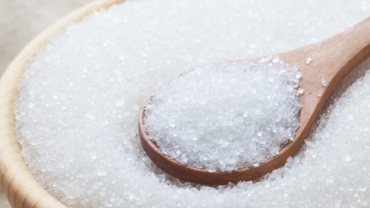
With low carb and ketogenic diets having exploded in popularity, there’s growing interest in identifying or synthesizing new sweetening agents to allow people to enjoy occasional treats without wreaking havoc on their blood sugar and insulin. Several such substances are already in widespread use, but most have drawbacks. So the search is constantly on to find new sweeteners that have only benefits and no drawbacks—or, at the very least, ones for which the pros vastly outweigh any potential cons. Enter allulose.
What is Allulose?
Allulose is a monosaccharide epimer of fructose, formally called D-psicose. It’s found naturally in jackfruit, figs, raisins, and maple syrup. Humans lack the enzymes to digest allulose, so it is largely excreted, but without the unpleasant GI effects induced by certain sugar alcohols. (It’s excreted primarily in the urine and has very low colonic microbial fermentability.) It’s an ideal sweetener for those on ketogenic or reduced carb diets, as it has no impact on blood glucose or insulin levels when consumed in reasonable amounts. Ketogenic and low-carb diets are used for a host of reasons other than weight loss, but for those who are looking to lose body fat, allulose may be an ideal sweetener since it is nearly calorie-free and has been shown to have a small but notable impact on reducing body fat mass.
Metabolic Effects of Allulose
Scientific evidence supports the low fermentability and negligible metabolism of allulose in humans. In healthy subjects, allulose was shown to be absorbed in the small intestine but not metabolized. In one study, approximately 90% of ingested allulose was recovered in urine, with 1.79-5.65% recovered in feces.
Allulose has interesting properties beyond these attributes, such as improving glucose tolerance and insulin sensitivity, and reducing adipocyte inflammation. Co-ingestion of allulose in a mixed (carbohydrate-containing) meal has been shown to modulate the postprandial glycemic impact of the meal. This has been demonstrated in healthy subjects as well as those with pre-diabetes. In one study, administration of 5g allulose in tea consumed with a mixed meal (425 calories, 84.5g carbohydrate, 13.3g protein, 3.7g fat) resulted in significant decreases in postprandial glucose and glucose area under the curve compared to the control tea (containing 10mg aspartame). The same study assessed longer term safety of allulose, wherein subjects consumed 5g with meals three times daily for 12 weeks. At the end of 12 weeks and after 4 weeks of follow-up after the intervention, no abnormal effects or clinical problems were observed.
Similar findings were seen in a study of healthy young subjects given various doses of allulose along with 75g of maltodextrin as a beverage. Compared to taking the maltodextrin alone, the elevations in blood glucose and insulin were suppressed with co-ingestion of 5g or 7.5g of allulose, but not with 2.5g. Suppression of insulin is noteworthy, because owing to the prevalence of metabolic syndrome and other hyperinsulinemic conditions, a reduction in glucose levels at the expense of substantially elevated insulin would be undesirable.
The precise mechanisms by which allulose reduces postprandial glucose excursions is not known for certain, but researchers believe it may be due to inhibition of alpha-glucosidase, an intestinal brush border enzyme that breaks down starch and disaccharides into glucose. Another hypothesis is that allulose may promote hepatic uptake of glucose and accumulation of glycogen, increasing glucose tolerance.
Animal studies provide evidence that allulose has other potentially beneficial effects, such as suppressed activity of hepatic lipogenic enzymes, resulting in reduced abdominal adipose deposition and triglyceride accumulation in the liver. Rat studies showing that allulose has an energy deposition efficiency of 0.3% that of sucrose led researchers to write that the energy value of this compound is effectively zero, and that allulose “is a rare sugar providing zero energy that may be useful in sweeteners for obese people as an aid for weight reduction.”
Preliminary evidence in humans suggests allulose may have a small beneficial impact on reducing body weight, total fat mass, and abdominal fat mass. A study of Korean adults showed that compared to placebo (sucralose), allulose taken at 4g or 7g per day for 12 weeks resulted in significant reductions in body fat mass, with the 7g dose also resulting in reduced abdominal fat as measured by CT scan.
Confusing Label
Because it is technically a sugar (it even bears the suffix “-ose”), the FDA currently requires that allulose be listed as sugar in the Nutrition Facts panel on food labels, along with its full amount of carbohydrate and calories. This is misleading, however, because owing to allulose not being metabolized by the body, it has just 1/10th the calories of sucrose—only 0.4 calories/gram. Patients should be made aware of this, so they will understand how to properly read labels of products containing allulose.
Over time, we will likely see more products entering the market being made with allulose. Mark Sisson, author of The Primal Blueprint and creator of the wildly popular site, Mark’s Daily Apple, posted a nice overview of allulose and the related science.
By Amy Berger, MS, CNS